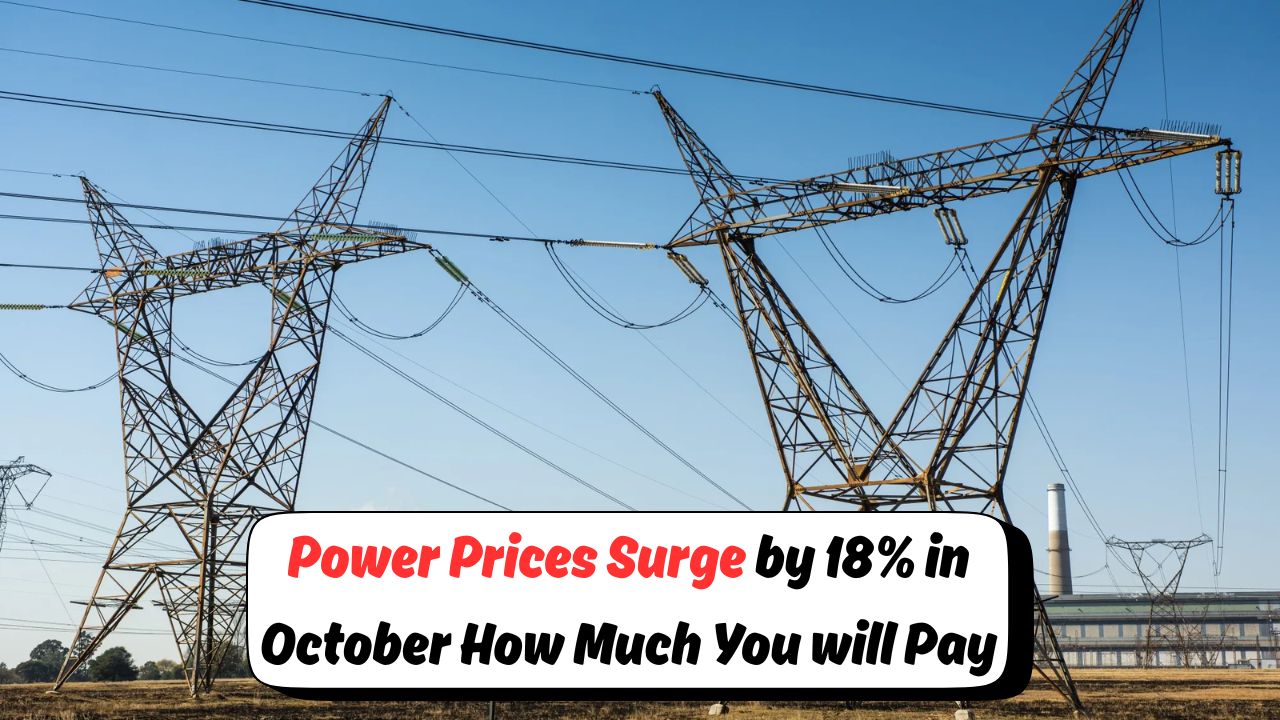Electricity Price Explosion – An electricity price shock is landing in October 2025: bills are set to jump by a staggering 18%, putting fresh pressure on family budgets, small businesses, and prepaid users across South Africa. That kind of leap isn’t just a number—it’s the difference between keeping the lights on comfortably and scrambling to cover month-end essentials. If you paid R1,500 last month, expect roughly R270 more for the exact same usage; a R2,800 bill could swell by about R504. Prepaid customers will feel it as fewer units for the same rand spend, while municipal add-ons and network charges may compound the pain in some areas. Households already battling food inflation and transport hikes will have to reshuffle priorities, and SMEs running fridges, ovens, compressors, or servers face slimmer margins overnight. The big question now is: how much extra will you personally pay—and what can you do about it before the new tariffs kick in? Let’s break down the numbers and your smartest next moves.
What the 18% Increase Means for Your Bill
To translate 18% into rands, take your typical monthly electricity spend and multiply by 1.18. If your average bill is R800, you’re looking at around R944—an extra R144 for the same consumption. On R1,500, it’s about R1,770 (+R270). A heavier-use household paying R3,200 would see roughly R3,776, adding R576 to monthly costs. Prepaid users should watch unit yields: for example, if R500 previously bought ~120 kWh, expect that to drop to ~102 kWh at the new price level (illustrative only—actual yields depend on your municipality’s block tariffs and levies). Remember that many municipalities layer fixed charges, service fees, and inclining block rates—so your personal increase could be slightly higher or lower than the headline 18%. The fastest way to get a close estimate is to check last month’s statement or prepaid receipt, note the total energy charges, and apply the 1.18 factor to that portion first.
Who Gets Hit the Hardest and Why
High-consumption households and electricity-intensive small businesses will feel the biggest rand-value shock because the percentage applies to a larger base. Think bakeries with multiple ovens, butcheries and spaza shops with constant refrigeration, laundromats, salons using dryers and heaters, and home offices running PCs plus air-conditioning. Residents in municipalities with steep inclining block tariffs may also be pushed into a pricier bracket sooner each month, magnifying the increase beyond the headline figure. Another vulnerable group is customers hovering just above “lifeline” or indigent thresholds; a modest rise in usage can disqualify them from discounted blocks and spike the total bill. Tenants in sub-metered properties should pay attention too: landlords sometimes pass through tariff changes with a lag, creating confusing month-to-month swings. Finally, households relying heavily on electric geysers and space heating will see disproportionate impacts, especially if usage patterns peak during evening hours when efficiency tends to be weaker.
Simple Ways to Cut the Damage This Month
Start with the biggest energy hog: your geyser. Dropping the thermostat to ~55–60°C, adding a geyser blanket, and timing it to run outside evening peaks can shave meaningful kWh. Shorten shower times and switch to efficient showerheads for stealth savings. Next, tackle always-on loads: old fridges, chest freezers, aquarium heaters, and standby electronics. A single aging fridge can devour hundreds of rands a month—defrost, seal, and temperature-check it, or replace with an A-rated unit if you can. Cook smart by batching oven sessions, using air fryers or microwaves for small meals, and keeping lids on pots. For lighting, swap remaining halogens for LEDs and make “last out, lights off” a household rule. If you work from home, enable aggressive sleep settings on PCs and monitors. Even small daily changes—turning off unused plugs, line-drying laundry, and pre-heating rooms briefly—compound into noticeable monthly reductions that cushion the 18% blow.
How to Check Your Real Increase Today
Grab last month’s bill or prepaid slip and isolate the energy charge (kWh × tariff), excluding once-off arrears or connection fees. Multiply that energy portion by 1.18 to get your October baseline, then add any fixed service charges or municipal levies listed on your statement. Prepaid customers should compare “rands spent” versus “units received” across two months to see the exact unit shrink. If your municipality publishes tariff notices, scan for inclining block thresholds—crossing a block can raise your effective increase above 18%. Track your meter daily for a week to find hot spots: note morning, midday, and evening readings and match spikes to appliances you used. For a tighter estimate, run a weekend “audit”: switch big devices on one at a time for an hour and record consumption changes. With that data, you’ll know whether a geyser timer, fridge service, or cooking routine tweak will save you R100, R300, or more when the new prices bite.
